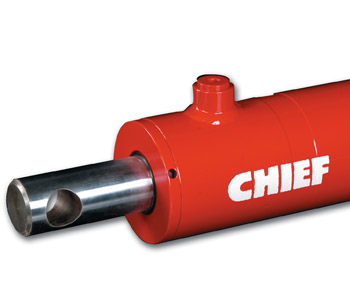 When you think of engineering brawn, hydraulic cylinders are probably what come to mind. These linear actuators can range from smaller than your arm to gargantuan devices found on excavators, ships, oil rigs and mining trucks. But whatever the size, it’s important to select the correct hydraulic cylinder for your application. Following are some tips from the experts.
When you think of engineering brawn, hydraulic cylinders are probably what come to mind. These linear actuators can range from smaller than your arm to gargantuan devices found on excavators, ships, oil rigs and mining trucks. But whatever the size, it’s important to select the correct hydraulic cylinder for your application. Following are some tips from the experts.
Marty Hegyi, Bosch Rexroth’s product manager for cylinders, based in Bethlehem, Pa., feels that supporting the cylinder properly might be the most important issue of all.
“How much support will the piston and cylinder require?” he asked. “Depending on stroke length, a stop tube may be required to prevent excessive wear and jack-knifing. However, a stop tube will not prevent rod bending—an oversize rod may be required, based on Euler calculations.”
Hegyi explained that perhaps the most common error in hydraulic design is underspecifying the piston rod, making the cylinder more prone to stress, wear and failure.
Meanwhile, Steve Cavera of Yates Industries in St. Clair Shores, Mich., said that engineers should focus on three critical areas when picking out a cylinder: Mount, stroke and rod end type selection.
Tom Jenkins, senior design engineer for Bailey International, said that engineers need to be careful with special considerations in a given application.
“Attempting to spec in a standard cylinder into applications that probably require special considerations for the particular application [is a problem],” said Jenkins. “Failing to account for all of the loading conditions that the cylinder could see in service is a mistake.”
Jeff Graupmann, global product manager for cylinders in Eaton’s Hydraulics Group, noted that there are a couple of critical items engineers should keep in mind when choosing a hydraulic cylinder.
“Just as the cylinder bore must be sized to provide the proper force for an application, a cylinder mounting that can absorb the forces of an application must also be properly specified,” Graupmann said. “Premature wear or cylinder damage can occur if the cylinder mount is not evaluated properly. For applications where the motion is linear and parallel to the cylinder rod motion, a rigid mount is recommended. For curvilinear motion, a swivel mount should be specified. Push versus pull requirements also impact which mounts should be used. The specifics of each application dictate the correct mounting style.”
Graupmann also said that rod buckling can result is significant damage, so care must be exercised to prevent rod buckling in compression applications with long strokes.
“To assure the rod stress does not exceed safe limits, the maximum allowable push stroke length must be calculated with the Cylinder Rod fully extended. These values can vary greatly by mount.”


Hi I was hoping to get some help selecting a hydraulic cylinder for a snowplow I am fabricating for a friends John Deere 2320 tractor. He wanted the plow to have power tilt using the dump/Kurl function on the tractors factory joystick. The owners manual for the tractor says it has 2421 psi of hyd. Pressure with a pump flow of 3.4 gpm and total flow of 5.6 gpm. I would also like to have 4″ travel both ways of center ( 8″ travel). Any help would be greatly appreciated. Thanks